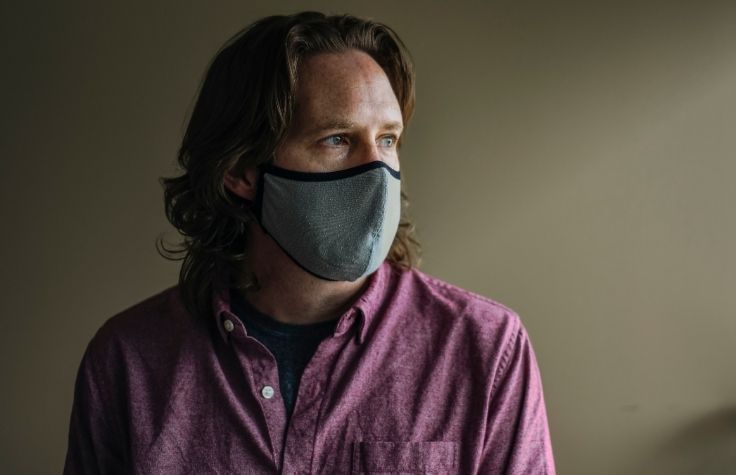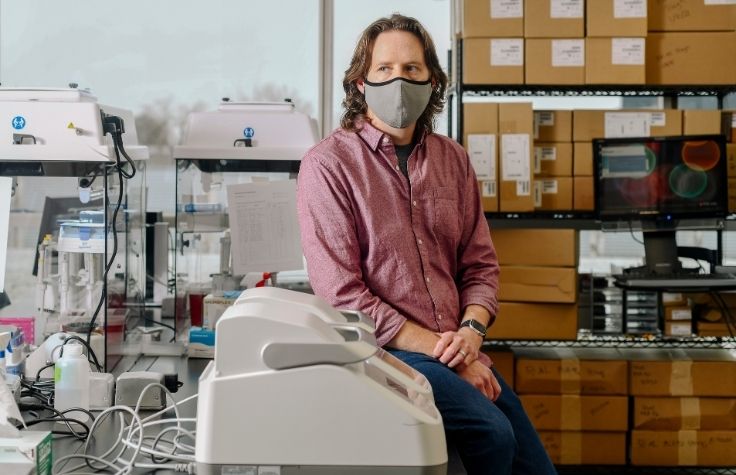
10 February 2021
“When we first heard about SARS-CoV-2 in December 2019/January 2020, we were like, ‘You know what, we’re going to want to sequence that,’” remembers Kelly Oakeson, Chief Scientific Officer and Director of NGS and Bioinformatics at Utah Public Health Lab (PHL), a branch of the Utah Department of Health. “We knew we could apply a lot of the lessons we’d learned from our bacterial work, so we quickly brought on testing. We knew it would help not only at a local level but that the data could be used for nationwide surveillance.”
When they first started identifying the virus, they wanted to know if it was one person bringing the virus into a healthcare facility, or a group of people from the community, and how they could put measures in place to contain the virus.
At the outset, Oakeson had just one wet lab scientist, Anna Sangster, doing all of the SARS-CoV-2 sequencing but also keeping up with the bacterial isolates and diagnostic testing. “Anna was back there, absolutely bonkers, working 12-hour days. Just killing it.” He also had just one bioinformatician, Erin Young, who developed in-house analysis pipelines “from scratch, on the fly, so that the data we were generating for SARS-CoV-2, we could actually make heads or tails of.”
NGS-based testing is one of the most effective ways to track, slow, and prevent the spread of the virus. While Polymerase Chain Reaction (PCR) testing is more common, NGS-based testing has proved superior for its accuracy, sensitivity, and specificity. It can fully explain origin, viral transmission, and evolution of strains, as well as whether a patient may have been impacted by coinfections. The intel on transmission helps public health officials zero in on outbreak clusters and, when applied widely, can inform on whether to implement or lift restrictions.
So it was critical that Oakeson’s team move fast. At times he felt enormous pressure and experienced sleepless nights, but he was happy they had the ability to pivot so quickly and expand their operations. They were the first public health lab to implement and validate COVIDSeq. Over the course of 2020, the PHL was able to hire a second bioinformatician and two more wet lab scientists. Oakeson was also able to bring on more equipment. They now have three MiSeq™ Systems, a NextSeq™ 550, iSeq™ 100 System, and a NovaSeq™ 6000, and all the liquid handling capabilities around that. Oakeson also purchased hardware and the “ridiculously fast” DRAGEN™ server.
Today they are one of the top public health labs in the United States, in terms of sequencing capacity. “We’ve really been able to grow and expand this program into what hopefully is a model for public health labs across the nation.”
Absent a coordinated, national surveillance system, the individual labs that have been most successful with NGS and surveillance efforts are those that already had support and infrastructure in place.
Oakeson had that and more—strong support, infrastructure, and leadership in the Utah Department of Health—in spite of the fact that only five years ago, when he first arrived at the lab, they had just one MiSeq sequencer and one other staffer. Small but mighty, they ran a robust sequencing program, looking for bacterial pathogens and participating in the CDC PulseNet program, which conducts surveillance for food-borne illnesses. They also helped hospitals and long-term care facilities with antimicrobial resistance sequencing, as well as dabbled in infectious disease and even aided the American Red Cross in identifying sources of outbreaks from blood-borne pathogens.

Naturally, Oakeson’s lab is now involved with several organizations focused on understanding coronavirus. Some are official, like the CDC Advanced Molecular Detection program, where his team teaches wet lab sequencing and bioinformatics to seven mountain region US states, and the CDC’s SPHERES Consortium (Sequencing for Public Health Emergency Response, Epidemiology and Surveillance), while others are homegrown, such as the 200-member State Public Health Bioinformatics (StaPh-B) work group. In that group, public health bioinformaticians and laboratorians discuss their daily challenges over Slack. “We’re trying to be the best steward of our knowledge and help disseminate it and share as much as possible.”
As of February 2021, the US is behind 37 other countries in sequencing SARS-CoV-2. We’re sequencing just 0.3 percent of all cases, while sequencing 5 percent of positive cases is becoming the norm, and some countries like the UK are sequencing as much as 7 to 10 percent. In January 2021, a year after the virus was first sequenced in Shanghai on a MiniSeq platform, WHO issued advice for countries to increase routine systematic sequencing of SARS-CoV-2 viruses.
At the outset of 2021, the need only grows more dire as three new strains are circulating. In particular, B.1.1.7 is on the rise, and Illumina worked with Helix and the CDC to identify 74 cases of it when it first came to the US. Oakeson’s lab identified two B.1.1.7 cases and is actively looking for P.1 and B.1.351.
We’re trying to be the best steward of our knowledge and share as much as possible.
At present, researchers are still confident that the three approved vaccines work on these new variants. But the idea is to stay on top of the virus. Global genomic surveillance will and should continue after the vaccine, since future mutations could escape vaccine efficacy and require a diagnostic or vaccine redesign. Oakeson likens it to the practice of sequencing enough flu viruses every year in order to inform and change the following year’s flu shots. “Sequencing is really the only way you’re going to discover if you need booster shots for new variants.”
Looking ahead, Oakeson hopes his work with sequencing the virus will help establish an infrastructure for future pandemics. They will also turn some of their energies to sequencing genetic material from the environment. “Now with our increased sequencing capacity, we can really do deep shotgun metagenomics, which is going to be huge.” They’ll practice microbial source tracking (looking at water contamination from humans and wildlife), as well as continue screening newborns and studying markers for Sudden Infant Death Syndrome (SIDS), and in general applying genomics more to research and healthcare.
“There’s no reason why we couldn’t use genomics more in healthcare, in public health, and in really every aspect of medicine. There are going to be more outbreaks of viruses. There’s going to be more nasty bacteria that crops up. There’s a huge concern with antimicrobial resistant bacteria and yeast microbes. There’s going to have to be some focus to figure out what those mechanisms are, how antibiotics are going to affect that, and then surveillance for the next pandemic.”
Just as Oakeson is decoding the virus and learning its secrets, he hopes the general public will have a new kind of understanding or appreciation. “Genomic sequencing makes us all more aware of what pathogens do and how we can prevent their spread and then change some behaviors to make us be more compassionate for others,” he says. “We’re all connected—humans, animals, the environment. I really hope we don’t lose that sense of community, that sense of oneness and collaboration.”


